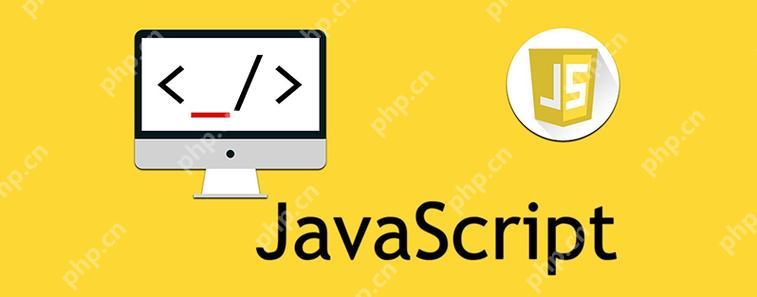在JavaScript中獲取當前日期和時間可以通過date對象實現。1) 創建date對象獲取當前日期和時間:const currentdate = new date(); 2) 獲取年月日:const year = currentdate.getfullyear(); const month = currentdate.getmonth() + 1; const day = currentdate.getdate(); 3) 獲取時間:const hours = currentdate.gethours(); const minutes = currentdate.getminutes(); const seconds = currentdate.getseconds(); 4) 格式化日期:function formatdate(date) { return ${date.getfullyear()}-${String(date.getmonth() + 1).padstart(2, ‘0’)}-${string(date.getdate()).padstart(2, ‘0’)} ${string(date.gethours()).padstart(2, ‘0’)}:${string(date.getminutes()).padstart(2, ‘0’)}:${string(date.getseconds()).padstart(2, ‘0’)}; } 5) 處理utc時間:const utcdate = new date().toutcstring(); 6) 使用mongoose的timestamps選項自動處理創建和更新時間:const mongoose = require(‘mongoose’); const userschema = new mongoose.schema({ name: string }, { timestamps: true }); 7) 計算兩個日期之間的天數差:function daysbetween(date1, date2) { const oneday = 24 60 60 * 1000; return math.round(math.abs((date1 – date2) / oneday)); }

用JavaScript獲取當前日期和時間其實很簡單,但這只是冰山一角。讓我們深入探討一下這個話題,同時我會分享一些實用的經驗和技巧。
獲取當前日期和時間在JavaScript中是通過Date對象實現的。讓我們看看如何做:
const currentDate = new Date(); console.log(currentDate);
這段代碼會返回一個包含當前日期和時間的字符串。不過,這只是開始,我們可以進一步處理這個日期對象,來獲取更具體的信息。
立即學習“Java免費學習筆記(深入)”;
比如,如果你只想要年月日,可以這樣做:
const year = currentDate.getFullYear(); const month = currentDate.getMonth() + 1; // 月份從0開始,所以要加1 const day = currentDate.getDate(); console.log(`今天是${year}年${month}月${day}日`);
如果你需要時間,可以這樣:
const hours = currentDate.getHours(); const minutes = currentDate.getMinutes(); const seconds = currentDate.getSeconds(); console.log(`現在是${hours}時${minutes}分${seconds}秒`);
現在,讓我們談談一些更高級的用法和需要注意的地方。
首先是格式化日期。JavaScript的內置方法并不總是能滿足我們對格式的要求,所以我們經常需要自己編寫格式化函數:
function formatDate(date) { const year = date.getFullYear(); const month = String(date.getMonth() + 1).padStart(2, '0'); const day = String(date.getDate()).padStart(2, '0'); const hours = String(date.getHours()).padStart(2, '0'); const minutes = String(date.getMinutes()).padStart(2, '0'); const seconds = String(date.getSeconds()).padStart(2, '0'); return `${year}-${month}-${day} ${hours}:${minutes}:${seconds}`; } console.log(formatDate(new Date())); // 輸出類似于 "2023-05-15 14:30:45"
這個函數不僅可以格式化日期,還確保了月份、日期、小時、分鐘和秒鐘都以兩位數的形式顯示,這在很多應用場景下都是很有用的。
關于時間處理,我在項目中遇到的一個常見問題是時區處理。JavaScript的Date對象默認使用本地時間,但有時我們需要處理UTC時間或其他時區的時間:
const utcDate = new Date().toUTCString(); console.log(utcDate); // 輸出類似于 "Mon, 15 May 2023 06:30:45 GMT"
如果你需要處理特定時區的時間,可以使用一些第三方庫,比如moment.JS或luxon,它們提供了更強大的時區處理功能。
在實際項目中,我發現日期和時間的處理往往會涉及到數據庫的交互。如果你使用的是mongodb,通常會存儲UTC時間,然后在前端或后端進行轉換。這里有一個小技巧,使用Mongoose的timestamps選項可以自動處理創建和更新時間:
const mongoose = require('mongoose'); const userSchema = new mongoose.Schema({ name: String }, { timestamps: true // 自動添加createdAt和updatedAt字段 }); const User = mongoose.model('User', userSchema);
這樣,每次創建或更新文檔時,MongoDB會自動添加或更新createdAt和updatedAt字段,這對于日志和審計非常有用。
最后,我想分享一些關于日期處理的性能優化建議。在處理大量日期數據時,使用原生JavaScript方法通常比使用第三方庫更高效。以下是一個簡單的例子,展示了如何高效地計算兩個日期之間的天數差:
function daysBetween(date1, date2) { const oneDay = 24 * 60 * 60 * 1000; // hours*minutes*seconds*milliseconds const diffDays = Math.round(Math.abs((date1 - date2) / oneDay)); return diffDays; } const date1 = new Date('2023-05-01'); const date2 = new Date('2023-05-15'); console.log(daysBetween(date1, date2)); // 輸出 14
這個方法避免了復雜的庫依賴,直接使用JavaScript的日期對象進行計算,非常高效。
總之,JavaScript的日期和時間處理雖然看似簡單,但實際上有很多需要注意的地方和可以優化的空間。通過這些例子和技巧,希望能幫助你更好地掌握和應用日期和時間處理。


















